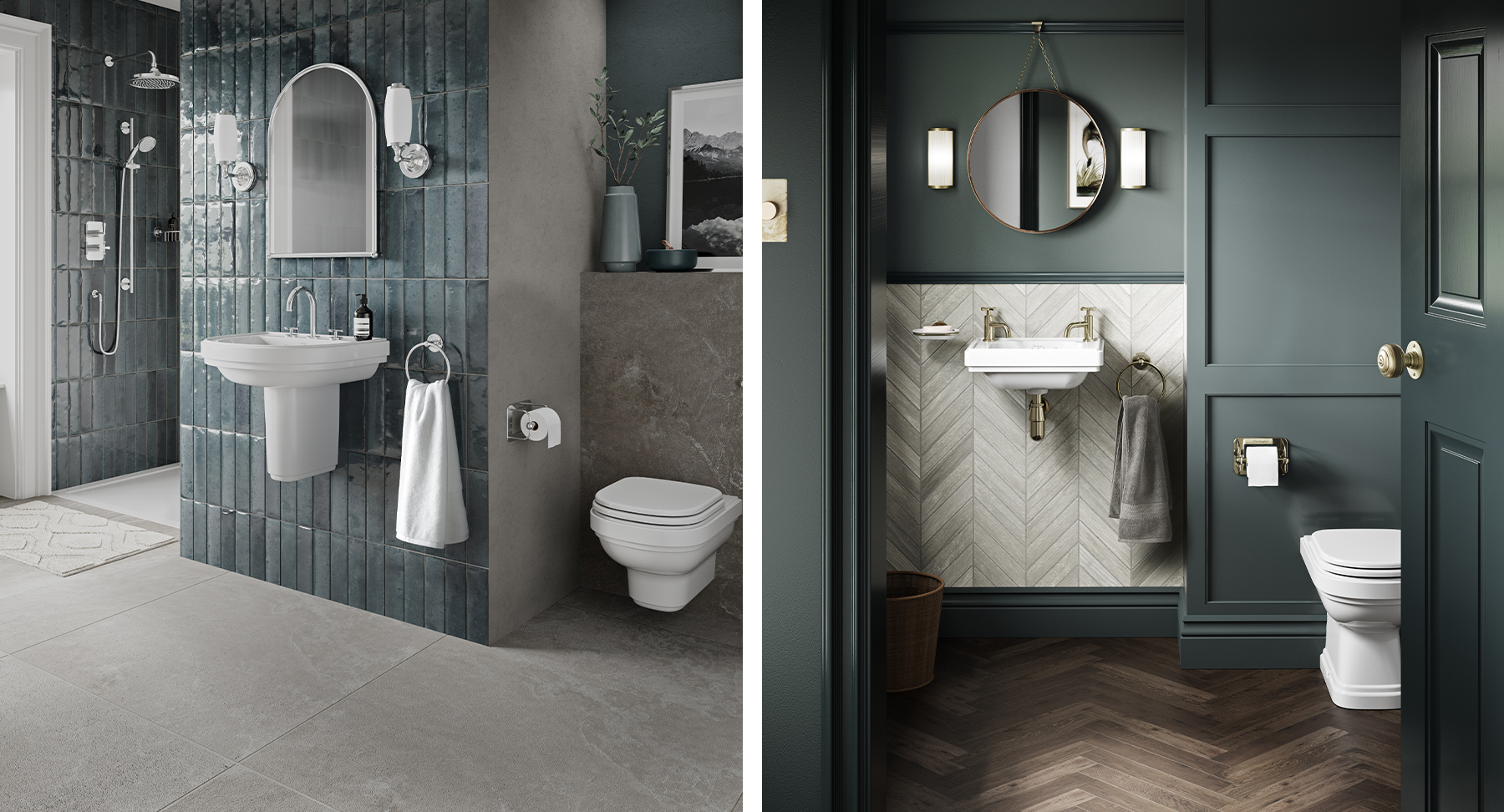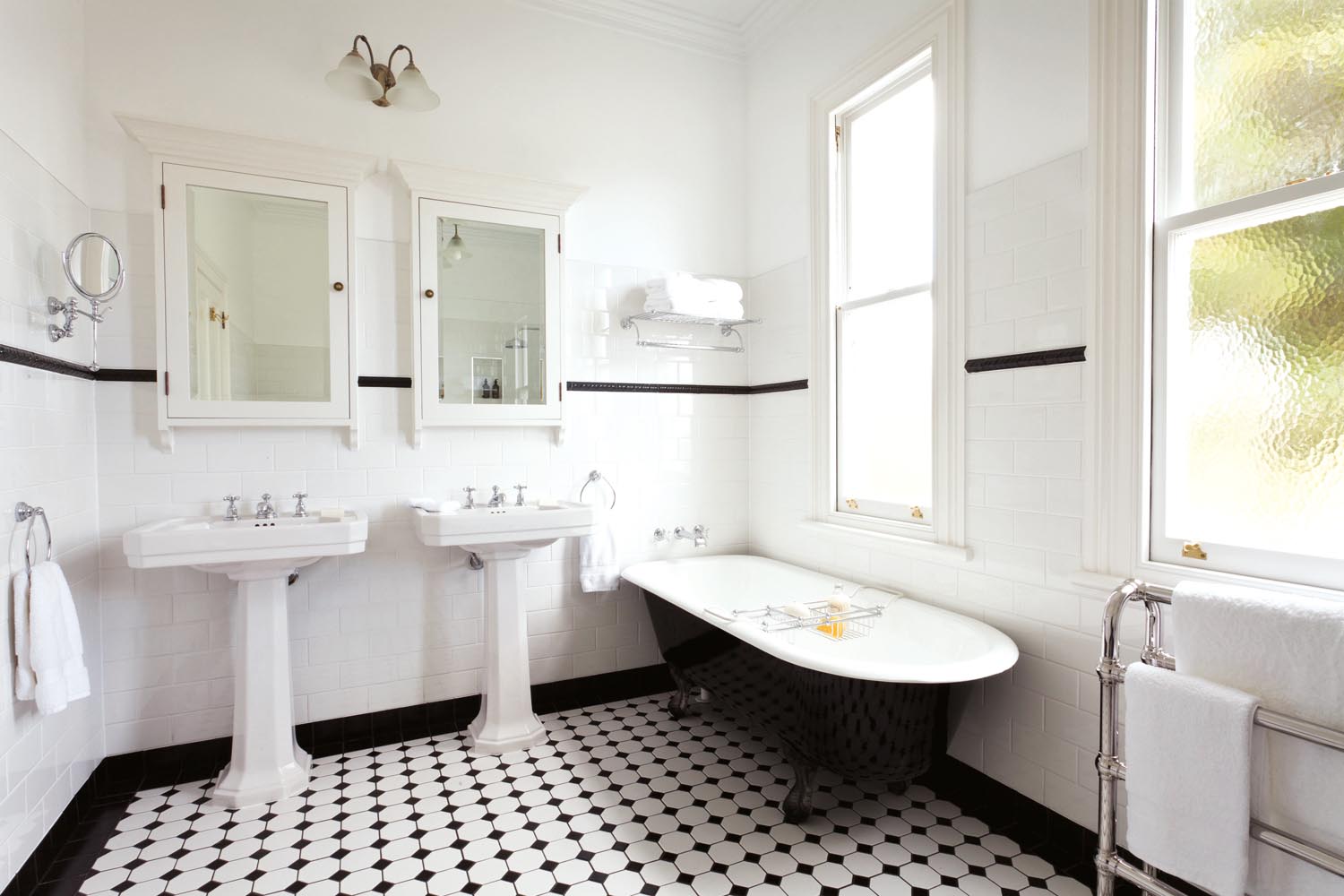The Allure of Vintage Charm

The 1920s was an era of unparalleled elegance and sophistication, a time when design aesthetics were characterized by clean lines, geometric patterns, and a sense of refined luxury. This era’s influence continues to resonate in modern design, particularly in bathroom spaces, where homeowners seek to infuse their personal sanctuaries with a timeless and luxurious feel.
Incorporating 1920s Bathroom Elements
Incorporating 1920s bathroom elements can evoke a sense of nostalgia and sophistication, transforming a modern bathroom into a sanctuary that transcends time.
“The key to creating a 1920s-inspired bathroom is to embrace the era’s emphasis on clean lines, geometric patterns, and luxurious materials,” says renowned interior designer, [Insert Name], known for her work in restoring historic homes.
Iconic 1920s Bathroom Features
The 1920s bathroom was a haven of luxury and elegance, characterized by distinctive features that remain iconic today.
- Clawfoot Tubs: These freestanding tubs, often made of cast iron or porcelain, exude a sense of old-world charm and are a defining feature of 1920s bathrooms. Their graceful curves and elegant design add a touch of grandeur to any space.
- Geometric Tiles: Geometric patterns, particularly those inspired by Art Deco, were ubiquitous in 1920s design. These patterns, often found in black and white or with pops of color, were used extensively in bathroom floors and walls, creating a visually striking and sophisticated aesthetic.
- Art Deco Fixtures: The Art Deco movement, with its emphasis on geometric forms and bold lines, had a significant influence on 1920s bathroom fixtures. From faucets and towel bars to light fixtures, Art Deco elements added a touch of glamour and sophistication.
Modernizing the Classics

A 1920s bathroom, with its elegant fixtures and timeless charm, can be transformed into a haven of modern luxury. The key is to embrace the essence of vintage style while incorporating contemporary design elements that enhance both aesthetics and functionality. This approach creates a harmonious blend of classic elegance and modern convenience.
Blending Traditional and Contemporary Elements
A successful modernization strategy involves integrating vintage details with modern design principles. This can be achieved by retaining the bathroom’s original architectural features, such as decorative moldings, high ceilings, and intricate tilework. These elements serve as a foundation upon which contemporary touches can be layered. For instance, a clawfoot tub, a hallmark of the 1920s, can be paired with a sleek, minimalist faucet, creating a visual contrast that adds depth and interest.
Modern Materials and Finishes
The use of modern materials and finishes can significantly elevate a 1920s bathroom. Sleek chrome fixtures, such as faucets, towel bars, and showerheads, introduce a contemporary edge while complementing the vintage aesthetic. Marble, with its timeless elegance, can be incorporated in various forms, from countertops and flooring to accent walls. Its luxurious texture and subtle veining create a sophisticated backdrop for the vintage elements. Reclaimed wood, with its unique character and sustainable appeal, can be used for vanity cabinets, shelving, or even accent walls. Its warm tones and natural grain patterns add a touch of rustic charm that complements the vintage style.
Incorporating Modern Functionality
Modernization extends beyond aesthetics and encompasses the integration of cutting-edge technology for enhanced functionality. Smart toilets, with their automatic flushing and temperature control features, provide unparalleled comfort and hygiene. Heated floors offer a luxurious touch, keeping the bathroom warm and inviting, especially during colder months. High-tech shower systems, with multiple spray settings and adjustable temperatures, create a spa-like experience. These modern features seamlessly blend with the vintage charm, enhancing both functionality and comfort.
Creating a 1920s Bathroom with Modern Touches: 1920s Bathrooms With Modern Touches
Transforming your bathroom into a vintage haven with a modern twist is a captivating design challenge. The 1920s, an era of elegance and innovation, provides a rich tapestry of inspiration for creating a space that’s both timeless and functional. This guide delves into the art of crafting a 1920s-inspired bathroom with modern touches, showcasing how to blend classic charm with contemporary practicality.
Designing a 1920s Bathroom Layout, 1920s bathrooms with modern touches
The key to designing a 1920s-inspired bathroom is to create a layout that maximizes space and functionality. This means carefully considering the placement of fixtures and incorporating clever storage solutions to keep the space tidy.
- Prioritize Functionality: The layout should prioritize the efficient use of space. Consider the placement of the vanity, toilet, and shower to ensure smooth movement and ample room for getting ready.
- Maximize Storage: The 1920s aesthetic often featured built-in cabinets and shelves. Incorporate these features in your bathroom design to create a sense of organization and to conceal toiletries and other essentials.
- Consider a Separate Shower Area: For larger bathrooms, consider creating a separate shower area, reminiscent of vintage spas. This not only adds a touch of luxury but also helps to keep the main bathroom area dry.
Modern Fixtures and Accessories for a Vintage Aesthetic
Modern fixtures and accessories can enhance the vintage aesthetic of a 1920s bathroom while ensuring functionality.
Table: Modern Fixtures and Accessories for a 1920s Bathroom
| Category | Modern Fixture/Accessory | Vintage Inspiration |
|---|---|---|
| Lighting | Pendant lights with geometric shapes and metal finishes. | Chandeliers with crystal accents and ornate designs. |
| Mirrors | Oversized mirrors with beveled edges and decorative frames. | Mirrors with ornate frames, often featuring intricate carvings or etched designs. |
| Storage Solutions | Vanity cabinets with sleek, minimalist designs and brass hardware. | Medicine cabinets with intricate detailing and glass panels. |
Incorporating Contemporary Color Palettes and Patterns
The 1920s were known for their bold color palettes and geometric patterns. While embracing these elements, consider incorporating contemporary color palettes and patterns to create a modern twist.
- Color Palette: Opt for a neutral base, such as white or cream, and then add pops of color with accessories and decorative elements. Think jewel tones like emerald green, sapphire blue, and ruby red, which were popular in the 1920s.
- Patterns: Geometric patterns, such as chevrons, art deco motifs, and geometric tiles, can add a touch of vintage flair. Consider using these patterns in the flooring, walls, or accessories.
- Modern Touches: Incorporate contemporary elements, such as sleek faucets, minimalist towel bars, and modern lighting fixtures, to create a balanced aesthetic.
